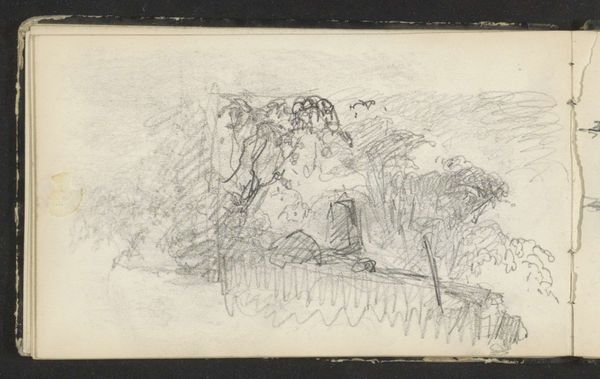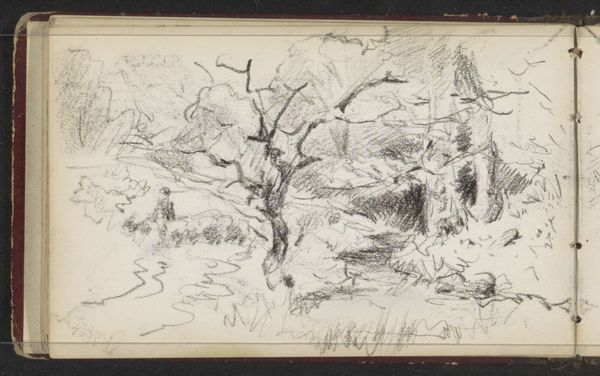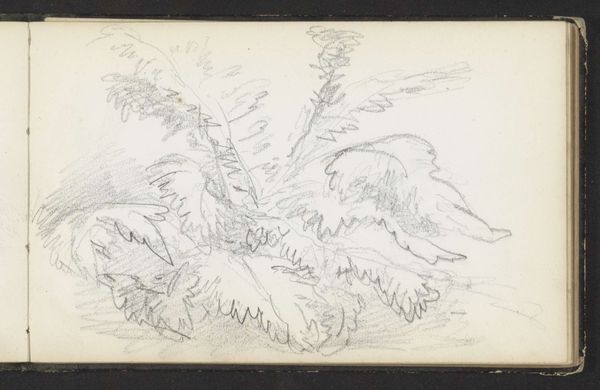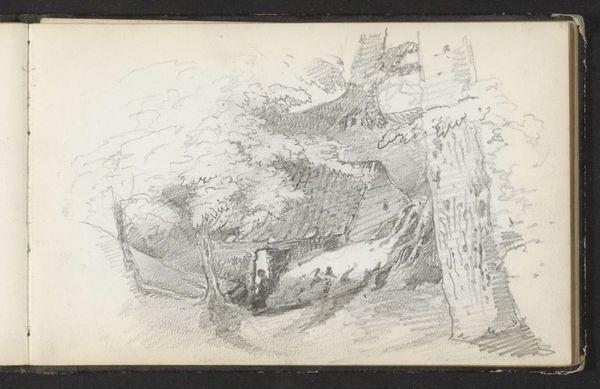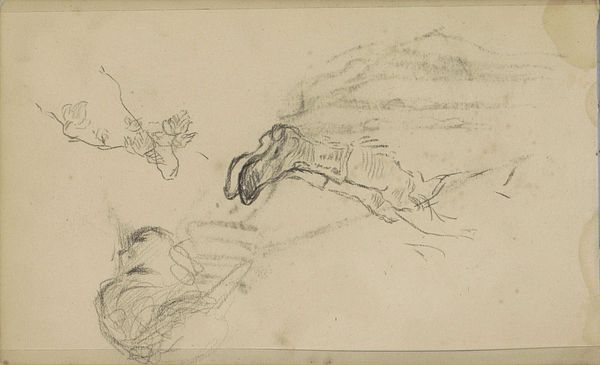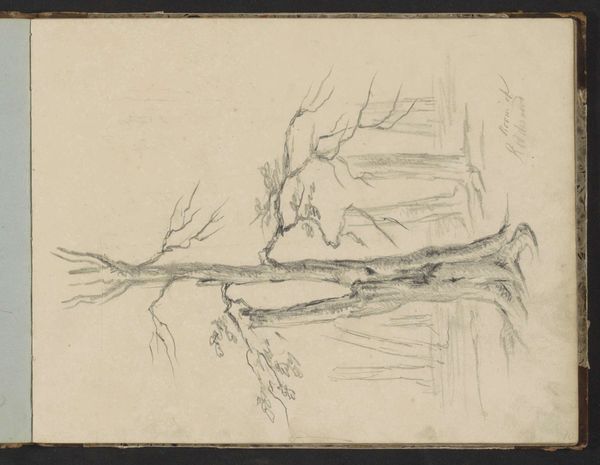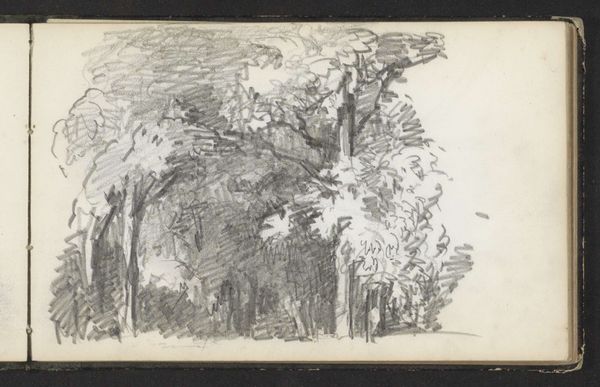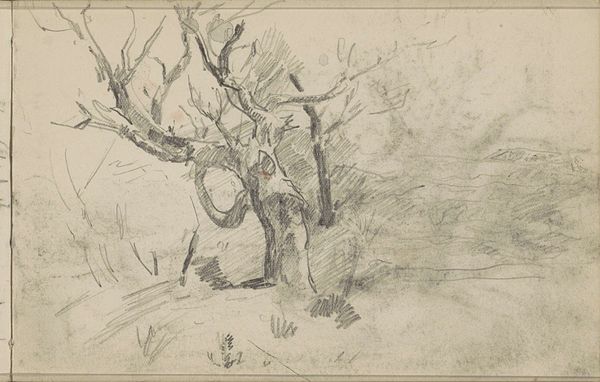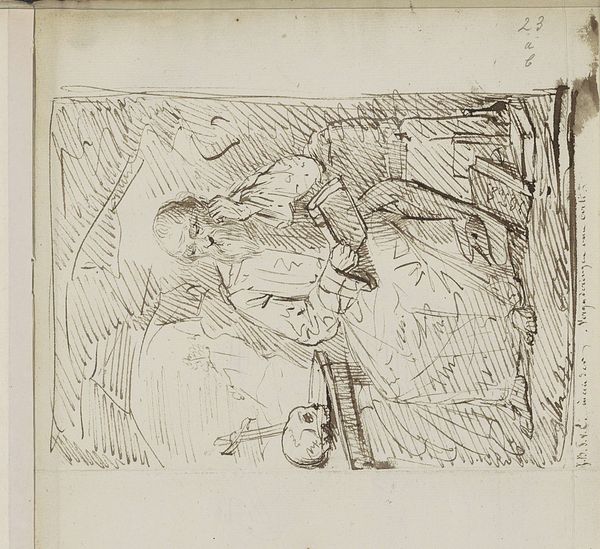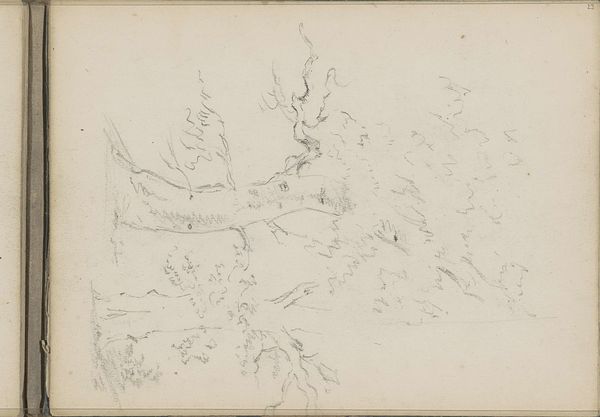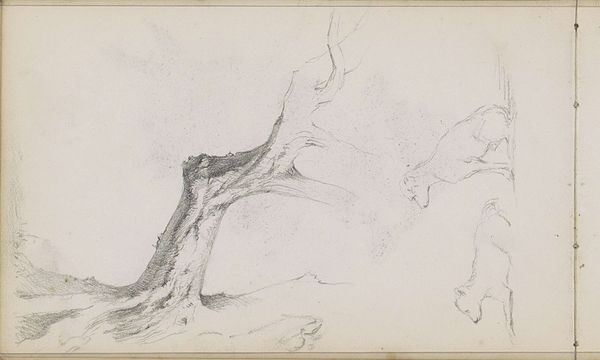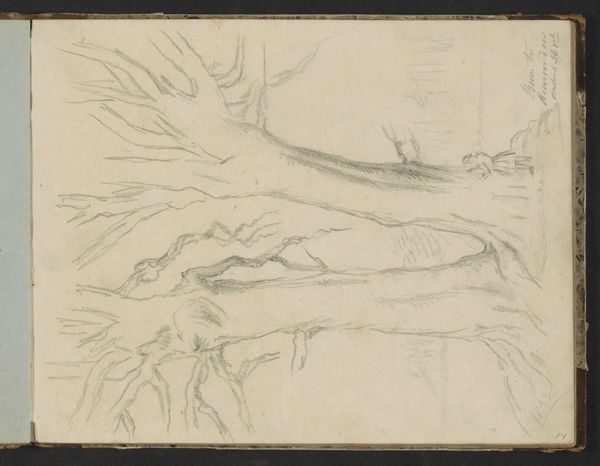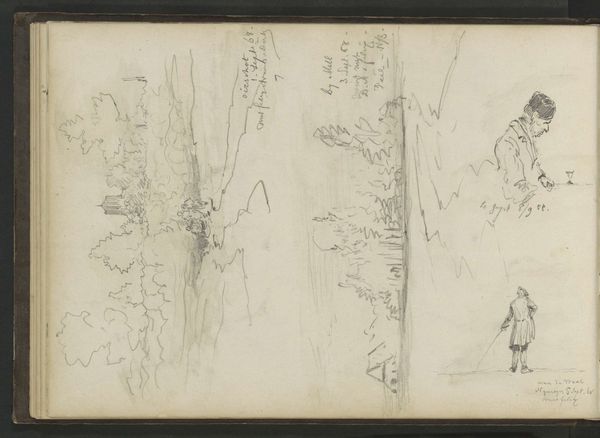
Copyright: Rijks Museum: Open Domain
Editor: We're looking at "Figuur op een steen bij een bospad" by Johannes Tavenraat, created between 1857 and 1859. It's a drawing in pencil. It feels very… fleeting, like a quickly captured moment in nature. What historical contexts illuminate this sketch? Curator: It is fascinating to think of this in its historical context. This drawing comes from a time when Romanticism was heavily influencing art, prioritizing emotional and individual experience, often through encounters with untamed nature. Given that it’s a landscape with a figure almost secondary to the woods, what was the intended audience’s experience with the forests and landscapes depicted? Was it meant for the consumption of an increasingly urbanized populace? Editor: So, was it about idealizing something people were losing touch with? A sort of constructed longing for rural simplicity? Curator: Precisely. Drawings like these served a social function. They romanticized the idea of rural life and escape from urban squalor, reflecting and perhaps shaping the longing for simpler times as industrialization took hold. Think about how it circulated, how the depiction reinforced certain values or even nationalistic sentiment related to the native landscape. Editor: It makes me wonder, were these landscapes genuinely untouched, or were artists already shaping them into what they believed a landscape *should* be? Were they inventing a tradition, almost? Curator: That's a key question. Consider how even the *selection* of which landscapes were depicted influenced a particular narrative. Were artists encouraged to portray particular regions over others, influencing artistic value, public appeal, and even local tourism? How would a drawing of this kind in the Rijksmuseum further affect national cultural identity? Editor: I never really thought about landscape drawings in terms of their broader social impact. That's definitely given me a new perspective! Curator: And it shows how seemingly simple sketches are, in fact, deeply embedded in cultural and historical currents. It reveals the ways that images shaped, and were shaped by, the public's relationship to the environment.
Comments
No comments
Be the first to comment and join the conversation on the ultimate creative platform.

